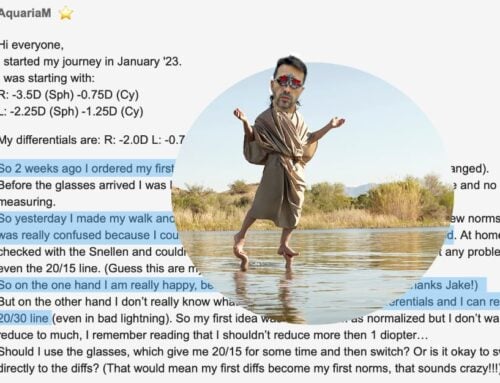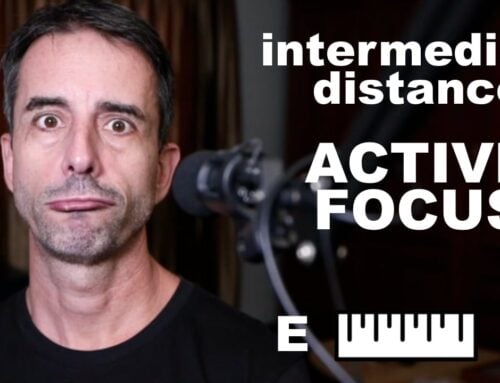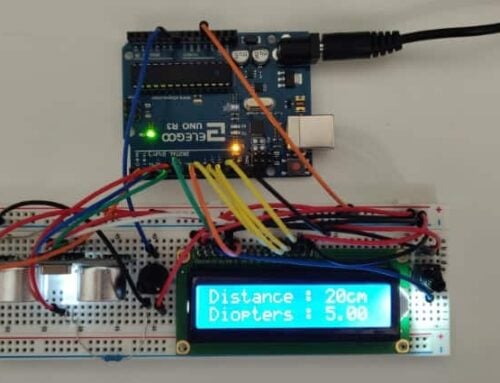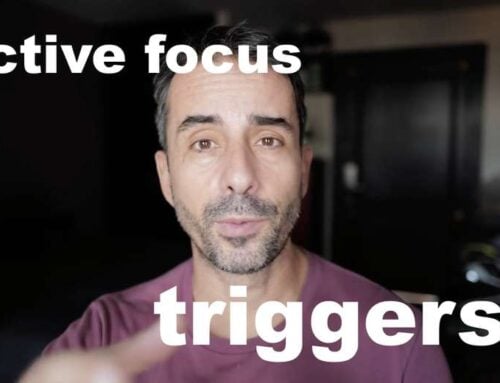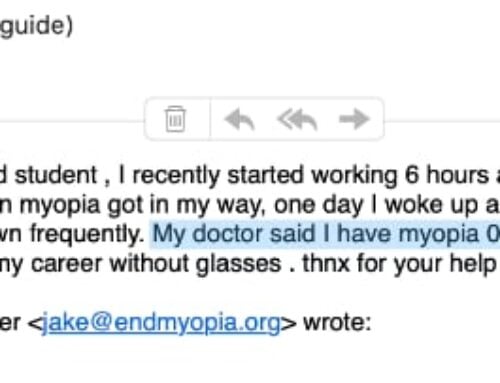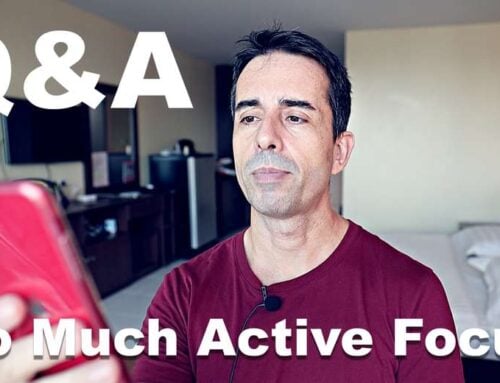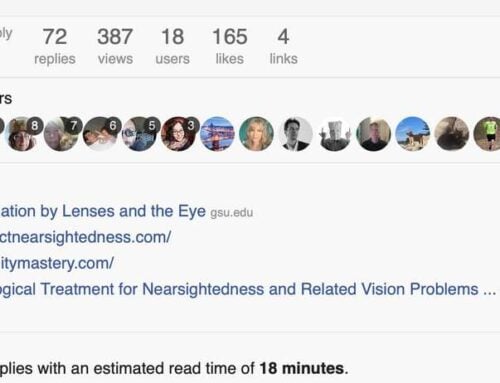Dry eyes can contribute to reduced focusing ability. You may have noticed this, especially if you are using correctly reduced prescriptions – when your eyes are dry, your ability to refocus on objects close to your blur horizon is diminished.
There are a number of causes for dry eyes, some of them chronic. While we can not account for all of them here, let’s take a look at of the easily prevented scenarios:
Ambient Air Flow
If your eyes are otherwise unstrained, this tends to be less of an issue. On the other hand though, if you are spending many hours focused-up close, possibly dealing with a bit of a lack of sleep, moving air may become a problem.
It is a good idea to avoid having a fan blowing directly at your face, while you are reading a book, or working at the computer. Likewise, sitting under or near an air conditioning duct, may reduce available lubrication in your eyes to the point that you feel your eyes getting dry.
Likewise, sitting next to an open door or window, with noticeable draft, can reduce available tear fluid to the point that you notice discomfort.
To test, remove yourself from the scenarios mentioned above for three to four days, and assess whether the condition improves. While air flow is not the primary cause of dry eyes, being careful about this type of environment may help prevent your eyes becoming so dry that you feel discomfort.
Humidity
As above, humidity is merely a potential contributing factor, which may take your eyes past the threshold of just barely enough lubrication, to becoming noticeably dry.
In a closed environment, you may want to check the ambient humidity, and considering increasing it by using a room humidifier. Again, rather than simply taking this step, you should test the difference between a more and less humid environment for a few days, and gauge the impact.
Excessive Close-Up
This is a frequently overlooked cause of dry eyes. Take a look at the abstract of this Computer Vision Syndrome (CVS) study, published on the US National Library of Medicine:
Computer vision syndrome (CVS), a highly prevalent condition, is frequently associated with dry eye disorders. Furthermore, a reduced blink rate has been observed during computer use. The present study examined whether post task ocular and visual symptoms are associated with either a decreased blink rate or a higher prevalence of incomplete blinks. An additional trial tested whether increasing the blink rate would reduce CVS symptoms.
Read the complete abstract and summary of findings here.
Blinking your eyes, as you naturally do, helps deliver and distribute the tear fluid your eyes require. You may naturally be blinking around 15 times per minute, but as little as five times per minute when you are focused up close. This significant reduction in blinking can be further aggravated by screen glare, incorrect prescription use, and poor lighting.
You may find that a majority of resources discussing dry eyes are more focused on simple fixes (artificial tears out of a bottle), rather than exploring causes.
There is a significant correlation between close-up use, and dry eyes.
You can find this in a number of clinical studies, and I have observed this as well, in 40 years of treating clients for myopia symptoms. Dry eye complaints are significantly more prevalent in those who describe their computer use as ‘heavy’ (6+ hours per day), than those with light to moderate close-up use.
Limiting close-up use is the single best prevention for dry eyes. Taking frequent (and extended) breaks can help reduce the symptom. Above mentioned peripheral cause contributors can also help in getting you past the threshold where your eyes actually feel dry.
A Word of Caution:
Artificial tears are generally not a symptom mitigation strategy I would recommend. Except for specific cases, diagnosed with a medical condition causing dry eyes, this substitute is very likely to actually make your eyes more dry, in the long term.
Contributing to this are some ingredients found in many common artificial tear solutions, as well as a dependency that is created by using these drops on a regular basis.
Here is an easy way to test your own case:
Keep track whether you feel your eyes being dry, while you are on vacation, or during a long weekend when you hardly spend time up close. It may take several days for dry eye symptoms to subside. You may also have dry eyes from lack of sleep, alcohol consumption, or from partaking in activities creating a lot of air movement around your eyes (riding motorcycles, in convertible cars, boats, etc).
You may find, that after a week of relaxation, spending little time focused up close, that your eyes feel fine.
In this case (which is very, very common), be sure to avoid eye drops. Instead, take mental note when you feel your eyes getting dry, keep a log indicating how long you were already focused up close. You will have to reduce that time by at least 20% (you don’t notice the symptom till it is already too late to stop the symptom), to help avoiding dry eyes in the future.
In Conclusion
Avoid eye drops, unless you have a clinical dry eye condition. Even if you were diagnosed with dry eyes by a doctor, self examine during an extended vacation or by taking time away from close-up focus. It is quite likely that the symptom will subside, or at least greatly reduce.
If this is the case, check your environment, ensure that the air flow is low, and ambient humidity is at least moderately humid.
And most importantly, limit your close-up use. Your blink rate will decrease during computer use, and you will get dry eyes, which in turn will reduce your focusing ability, and contribute to myopia-like symptoms. For the computer use that can’t be avoided, make sure that there is minimal glare, that you use the correct prescription lenses, and avoid squinting at the screen.




